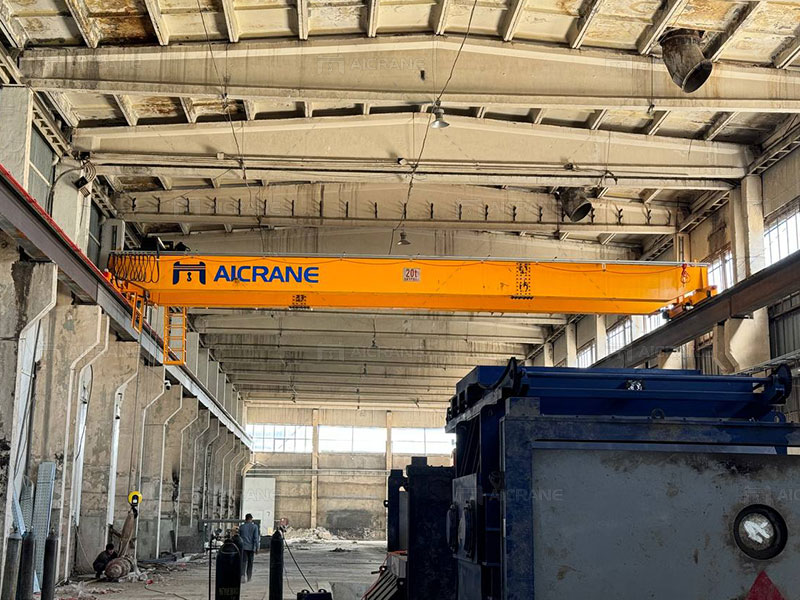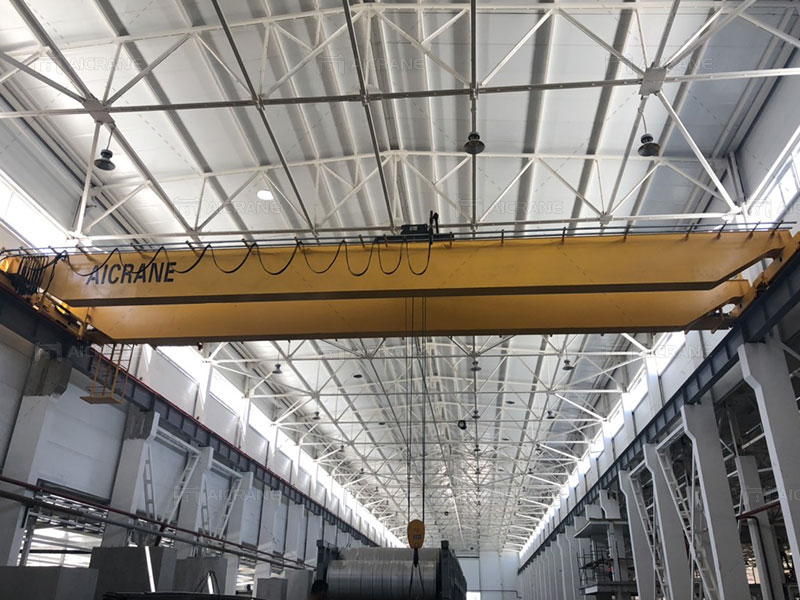When considering an overhead crane for your business, one of the most critical factors to evaluate is the lifting capacity. Overhead cranes with different capacities are designed to meet a wide range of industrial needs, and their prices vary accordingly. A common question among buyers is, “What’s the difference between a 20-ton and a 30-ton overhead crane price?” This article explores the factors that influence the pricing of these two capacities, the reasons for the cost differences, and how to choose the right crane for your application.

Factors Affecting Overhead Crane Prices
The price of overhead crane, regardless of its capacity, is influenced by several key factors:
- Material Costs:
- A 30-ton crane requires more robust materials, such as higher-grade steel and larger components, compared to a 20-ton crane. The increase in material cost significantly impacts the overall price.
- Design and Engineering:
- Higher-capacity cranes like the 30-ton models demand more advanced engineering and design work to ensure safety, durability, and efficiency. This adds to the price due to the specialized labor and technology involved.
- Components and Features:
- Both 20-ton and 30-ton cranes include core components such as hoists, trolleys, and control systems. However, a 30-ton crane typically requires larger or additional components to handle the increased load, increasing its price.
- Work Duty and Usage:
- The work duty (e.g., A5, A6, A7) determines the operational capacity and frequency of use. A 30 ton overhead crane designed for heavy-duty applications (e.g., continuous lifting in a steel mill) will cost more than a 20-ton crane intended for light to moderate usage.
- Span and Lifting Height:
- The span (distance between the crane’s rails) and lifting height also affect the price. Larger spans and greater lifting heights require more materials and precise engineering.
- Customization:
- Custom features, such as anti-sway mechanisms, remote controls, and special safety systems, can drive up the price. These features are often more critical for higher-capacity cranes like 30-ton models.
- Installation and Delivery Costs:
- Higher-capacity cranes are heavier and bulkier, requiring specialized transportation and installation, which increases the overall cost.

Price Comparison: 20-Ton vs. 30-Ton Overhead Cranes
While prices vary by manufacturer, region, and customization, here is a general comparison of costs between 20-ton and 30-ton overhead cranes:
Base Price
- 20-Ton Overhead Crane: The base price typically ranges from $25,000 to $50,000 for standard configurations.
- 30-Ton Overhead Crane: The base price generally starts at $40,000 and can exceed $80,000, depending on specifications.
Customization Costs
- Adding features like variable frequency drives (VFDs), wireless controls, or automated systems increases costs for both capacities. However, these additions are usually more expensive for 30-ton cranes because the components need to handle higher loads.
Installation and Delivery
- A 20-ton crane requires less transportation and installation effort compared to a 30-ton crane. Installation costs for a 20 ton overhead crane might range from $5,000 to $10,000, while a 30-ton crane installation could cost $8,000 to $15,000 or more.
Maintenance Costs
- Over time, maintenance for a 30-ton crane is higher due to the larger and more complex components. Spare parts for 30-ton cranes are also more expensive.
Reasons for the Price Differences
The price gap between 20-ton and 30-ton overhead cranes can be attributed to the following:
- Higher Material Requirements:
- A 30-ton crane’s structural components, such as girders and end trucks, are larger and heavier to support the increased load.
- Increased Engineering Complexity:
- Designing a crane to lift 30 tons requires more advanced calculations, stronger load-bearing parts, and rigorous testing, which add to the cost.
- Safety Requirements:
- Safety becomes even more critical at higher capacities. A 30-ton crane might include additional features like overload protection, redundant braking systems, and enhanced monitoring systems.
- Operational Demands:
- A 30-ton crane is often used in environments where reliability and efficiency are crucial, such as manufacturing plants, shipyards, and steel mills. Meeting these demands drives up the price.
Choosing the Right Crane for Your Needs
When deciding between a 20-ton and 30-ton overhead crane, consider the following:
- Application Requirements:
- Evaluate the type of materials you’ll be lifting, the frequency of operation, and the environment. For moderate loads and intermittent use, a 20-ton crane may suffice. For heavier loads and continuous operations, a 30-ton crane is more suitable.
- Budget Constraints:
- While a 30-ton crane offers more capacity and durability, it may not be necessary if your requirements can be met with a 20-ton crane. Carefully balance capacity with budget.
- Future Growth:
- If you anticipate increased lifting needs, investing in a 30-ton crane upfront may save you money in the long run.
- Supplier Reputation:
- Work with a reputable overhead crane supplier who can provide reliable products, competitive pricing, and excellent after-sales service.
Conclusion
The difference in price between a 20-ton and 30-ton overhead crane reflects the added materials, engineering, and features needed to handle the increased capacity. While a 20-ton crane is suitable for lighter and less frequent lifting needs, a 30-ton crane offers greater strength and reliability for demanding applications.
By carefully assessing your operational needs, budget, and future requirements, you can choose the right crane capacity that provides the best value for your investment. Consulting with a trusted crane supplier can also help you make an informed decision and ensure you get the most out of your purchase.